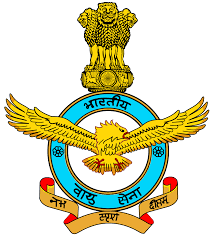Induction of Airborne Warning System: Revolutionizing Indian Air Force
On 27 May 2009, the Indian Air Force inducted one of the biggest state-of-the-art platforms in its fleet capable of giving advance warning of an aerial threat. The platform is also capable of gathering electronics and signal intelligence. This is India’s first Airborne Warning and Control System, commonly known as AWACS. Two more such aerial platforms are in queue to be inducted by 2012.
This flying machine, which has been waiting for some time, is a co-project involving three countries, India, Israel, and Russia, to get this eye-in-the-sky ready for operations. After initiating an agreement among the three countries, it took five years to make this platform airworthy. The system comprises Israeli-made radar fitted on top of the Russian-made IL-76 heavy transport aircraft and related electronics for data capture and real-time dissemination. Apart from the United States and Russia, the other states that possess this platform are Britain, Japan, Australia, and Turkey.
The overall cost of these three AWACS deals is $1.1 billion, and with its induction, IAF can boast of being one of the most prominent force multipliers in its inventory. The basic purpose for developing such systems is to cater to the conventional requirements of the Air Force’s tactical and strategic operations. However, this system also has excellent utility in addressing modern-day asymmetric threats. Simplistically speaking, any ground-based radar suffers from the limitations of the earth's curvature and cannot look beyond a particular distance, and to add to that, topographic features bring a large amount of ‘clutter’ in its signal reception. Subsequently, it becomes difficult to provide adequate advanced notice in regard to any incoming aerial threat. Such limitations could be overcome by mounting radar on an aerial platform that flies approximately 30,000/35,000 feet above ground level, offering a better ‘viewing’ and ‘listening’ capability.
AWACS can give advanced warnings about any incoming flying object, whether an aircraft or a cruise missile. Such platforms are also known as Airborne Early Warning (AEW) systems. These high-altitude radars are normally capable of seeing 400 km from their position. Such viewing capability would give Indian forces sufficient time to engage any incoming threat. India’s Defence Minister, Mr A K Antony, points out that the “current security scenario demands a need to maintain eternal vigil and safeguard the country’s strategic interest and economic assets. AWACS would provide the IAF a high degree of situational awareness, enabling it to dominate the airspace”.
This multipurpose platform is capable of being employed in defensive and offensive roles. In an offensive mode, the system provides radar coverage to direct offensive air operations and could effectively lead them to the target. In defensive mode, the system warns about incoming threats and helps counterattack operations. This platform can also provide unique surveillance facilities that are vital in battlefield management and act as a command and control nodal agency.
India’s AWACS is fitted with the Israeli Aerospace Industries (IAI) Phalcon system. Interestingly, China was to buy these radars from Israel during the 1990s. However, this deal could not go through because of the US objections to this supply. This is mainly because the US believed that the presence of such a system with China was undesirable, considering any possible conflict in Taiwan and the subsequent presence of the US Air Force.
As customary rituals, Pakistan has reacted to the induction of AWACS with its ‘habitual hysteria’. They feel that the induction of this system and the recently launched RISAT (Synthetic Aperture Radar satellite) has created an “imbalance in the power” in the region. Islamabad also intends to have one such system with them by October. Maybe more than any aerial threat from India, they would find this useful system to monitor (they can’t do more than this) the US Drones, which keep on attacking their sovereign state at its own will.
In the Indian scenario, it could be said that a Revolution in Military Affairs (RMA) is steadily taking place. The progress is slow but is definitively there, and the induction of AWACS is one more step in that direction. AWACS should not be seen as a standalone platform. This ‘all weather’ system would enable the Indian Armed Forces to graduate to the next stage of network-centric warfare. The new government in Delhi would have to address various challenges in the defence field. There is a need to bring overall reforms to modernise the defence sector. Modern-day warfare is all about the timely induction of technology. The ‘purchase lists’ of all three services demand immediate attention. The threat of terrorism should not dilute the defence preparedness to fight conventional battles. The emergence of terrorism does not reduce conventional threats. In the present scenario, China’s interests regarding Nepal and Sri Lanka should be deciphered correctly.
Modern-day threats could come from anywhere, from sea to cyber, from Pakistan to China. India, as a state, needs to remain prepared to address them. Inducting AWACS is the right step in that direction, irrespective of any delay in its induction. Many other military systems, like the aircraft carrier Gorshkov, demand immediate government attention, and it is hoped that the new government will put need-based defence requirements on the ‘fast track’.
